An examination of the history of the Indo-American engagement since Indian Independence shows that there were three major occasions when the relationship might have developed along more positive lines. These were, first, in the period immediately after Independence; the second was in the aftermath of the India-China war of 1962; and the last was after the end of the Cold War and the dissolution of the USSR. This last phase is still on-going, and is showing better results than the previous two, but there is still much that needs to be clarified – and changed - on both sides.
What follows is an attempt to understand the dynamics of these three phases in the Indo-US engagement in order to see why the results were [and are] less than satisfactory; it is not an attempt at recounting the history of the relations between the two countries. The purpose is to draw lessons from the earlier failures, to see if they can point the way to better relations in the future. Thus it will not focus on the 1970’s or the 1980’s, important though they are; they are of limited value in understanding why a strategic understanding was not possible between the two countries.
The standard interpretation of the less-than-happy state of relations between the two countries runs in terms of the differences over Cold War policies. India chose to stay non-aligned, the US was looking for allies against the USSR, or Communism more generally in the early phase, and thus could not find common strategic ground. Frequently enough, this is supplemented with references to individual differences, such as between Nehru and Dulles or Krishna Menon and pretty much everyone in the US foreign policy establishment.
What is incomplete, or even wrong, with this explanation is that it fails to explain why, after the collapse of the Soviet Union, relations between the two countries did not improve as both sides would have wished. There was improvement, no doubt, specially from the late 1990’s, but it was halting and contradictory – and the same less than satisfactory situation prevails today. This is not to underestimate the many solid achievements, especially of the last decade or so. Nonetheless, the fact that this group is discussing this question, and so are many others, is evidence that the promise of the relationship has not been met so far.
The first opening: 1949-54
It would, therefore, be worthwhile to explore whether the standard explanation is the complete picture. And here, it turns out, there are many facts which both sides have found it convenient to ignore. On both sides, there appears to be a willingness to let this incomplete narrative dominate the discourse – it suits Indian amour propre, and it suits the Americans to be able to say that they genuinely wanted and tried for better relations but it was not to be.
But the reality is that India did try and offer everything that America wanted. Nehru’s first visit to a superpower was not to the Soviet Union, but to the United States – as far back as in 1949. It was, in fact, the Pakistan Prime Minister who was scheduled to visit the USSR in 1949, though the visit did not take place. Nehru visited the USSR only in 1955, by which time American policies in South Asia were firmly locked down. And during his visit to the US, Nehru did not lecture or hector any of his interlocutors, but instead, assured them that India would stand with the democracies in the event of war. This was more clearly spelt out by his trusted foreign policy aide, Sir GS Bajpai, who assured his American counterparts that he was speaking with the full authority of his Prime Minister. His remarks, made to Acting US Secretary of State Lovett in April 1948, deserve to be quoted in detail:
“Sir Girja … pointed out that two fundamental considerations prevented Indian adherence to the Soviet bloc. First, through its association with the British, unhappy as it had been in some aspects, India had acquired the ideals of democracy and individual liberty, which were held by the US and other nations of the west. Second, India can expect no effective assistance from the USSR in its primary objective of strengthening itself economically and militarily. In fact, the US is the only country which is in a position to aid India. … Sir Girja stated that his remarks were being made with the full knowledge and authorization of Prime Minister Nehru…”
However, America was by then moving in a different direction.An inter-agency study had come to the conclusion that America had only limited interest and stake in South Asia, and such interest as there was, lay in Pakistan. The assessment of the Joint Chiefs of Staff in their Memorandum of 24 March 1949 reads as follows:
“From the military point of view, the countries of South Asia, except Pakistan have, under present and prospective conditions, little value to the United States. … The Karachi-Lahore area in Pakistan may, under certain conditions, become of strategic importance. In spite of tremendous logistical difficulties, this area might be required as a base for air operations against central USSR and as a staging area for forces engaged in the defense or recapture of Middle East oil areas.”
In order to see how this assessment affected US policies towards South Asia, it is instructive to follow the evolution of the American stance on the Kashmir question. This is important because it was by far the most important issue facing India and Pakistan at this time; it was also the issue that dominated the conversation of both countries with the US. In 1948, shortly after India took the dispute to the UN for pacific settlement under Chapter VI of the Charter, a discussion took place between American and British officials on the nature of the dispute. The American record of the conversation runs in part as follows:
“The British representative at first attempted to minimize such an analogy by asserting that Kashmir was ‘territory in dispute’. The US representatives agreed that Kashmir was a state about which a dispute had arisen between India and Pakistan but stated that they found it difficult to deny the legal validity of Kashmir’s accession to India. In the end, the British representatives agreed with the US point of view that we had to proceed on the assumption for the time being at any rate India had legal jurisdiction over Kashmir.”
However, by February 1950, that is, after the inter-agency discussion had focused on Pakistan as the country that presented some interest to them, this American position had changed, and the State Department was arguing against this very position. In an internal note, it was argued that
“In the opinion of the Office of the Legal Adviser, execution of an Instrument of Accession by the Maharajah in October 1947 could not finally accomplish the accession of Kashmir to either Dominion, in view of circumstances prevailing at that time…”
Looking at the sequence of events described above, it is hard to escape the conclusion that this revision of the American position on the legality of the accession was a result of the conclusion drawn a few months earlier that Pakistan was more important for America than India.
For connoisseurs of historical irony, it would be amusing to see that by August 1949, Nehru was sufficiently tired of American badgering on the subject of Kashmir to admonish Ambassador Loy Henderson that “he was tired of receiving moralistic advice from the US”. Since this is a charge the American leaders were later to level at Indian leaders, it is an indication of who went first. But on a more serious note, what this kind of testy exchange reveals is that the US frequently did not adequately understand how important the Kashmir question was for India, or the strength and depth of feeling over the issue. It is also true that the Indian leaders did not take the time to explain frankly and forcefully how pivotal this matter was to our overall foreign policy posture. In fact, all through the Indo-American relationship, this is a major failing perhaps on both sides, certainly on the Indian side, that they did not talk with sufficient candour.
This phase in our history set the basic parameters between India and the US, and it was not very promising at this point of time. However, worse was to come after the change of Administration in 1953. Whereas prior to this time, American military supplies were proceeding more or less even-handedly as between India and Pakistan, all this changed under the new Administration and by 1954, America had undertaken to provide military assistance to Pakistan. The record shows that all sides declared that the assistance was meant for the fight against Communist aggression, in reality Pakistan was arming against India. However, this was the occasion for the entry of the USSR into South Asian politics, and in December 1955, Khrushchev visited Srinagar and declared that Kashmir was an integral part of India and, in a pointed rebuttal of the Pakistani demand for self-determination, added that the people had already exercised their right of self-determination. As a veto wielding permanent member of the UN Security Council, this effectively put an end to any realistic chances of a UN-brokered settlement of the issue.
Two important conclusions may be drawn at this stage. The first is the great importance and sensitivity of the Kashmir issue for India. From a reading of the historical records, it frequently appears to be the case that American policy-makers did not grasp this reality. It sometimes appears as if this is still not fully understood in America. The second is that the USSR entered this issue much after the American policy-makers had set course for a pro-Pakistan stance. In later years, i.e., in the late 1950’s, senior Soviet officials were to tell their Pakistani counterparts that they took the stance on Kashmir, and, by extension, on South Asia, only after Pakistan joined the anti-Soviet pacts and started receiving US military aid.
In short, it was American policies in South Asia that brought India and the USSR together. Another important aspect of the politics of the region is worth emphasizing: the Pakistanis had offered to the Americans that they would supply troops to the Korean War, but pleaded that until a Kashmir settlement was found, they were unable to spare any troops for the purpose. To the British, who were then setting up the Middle East Defence Organization, the Pakistanis again offered to send troops – if they would help settle Kashmir, and address the Indian threat.
The second opening: 1962-1965
The next phase opened after the Indian defeat at the hands of the Chinese in 1962. Enough has been written about how it affected Nehru and his foreign policy, so there is no need to go over that ground one more time. What has not received adequate attention is the brief period November1962 to about the end of 1965. The war started on 20 October and continued until 21 November 1962, giving enough time for countries to define their positions – even their changing positions. In the initial period, the USSR was cautiously neutral, even tilting towards the Chinese. The Americans, under President Kennedy, were much more forthcoming. In the early weeks, too, both these countries were caught up in the Cuban Missile Crisis, and yet Kennedy was strongly supportive. The Americans offered all help to the Indian Army and went much further in terms of offering air defence cover, manned by American forces.
However, once the actual shooting stopped, the Americans all but made further military assistance conditional on India’s reaching a settlement with Pakistan. It is a measure of the Indian desire for American aid that the Indian leaders undertook some of the toughest negotiations on the subject of Kashmir. In response to very active shuttle diplomacy by Governor Harriman and Secretary Sandys, India offered significant territorial concessions to Pakistan, despite Pakistan’s signing a border agreement with China in March 1963, when the talks with India were at a very sensitive stage. However, the Pakistanis were unwilling to settle for anything less than the entire Vale, all the way south to the Chenab, and the talks ended without result. By this time, habitual American positions were beginning to assert themselves, and it did not help that they offered to both sides what were called the “elements” of a settlement, which, in essence, backed the Pakistani territorial demands.
The Soviets, by now over the Cuban troubles, and slipping into their long struggle with the Chinese, stepped in again and offered India the fighter aircraft it had asked for – with no conditions attached, unlike the Americans. Nevertheless, India did not make any long-term commitment to either side. To his credit, Kennedy came through with MAP assistance for India at this time, and the two countries signed an Air Defence Agreement – the first and only such understanding between India and America during the Cold War. This was not easy, since the Pakistanis and their supporters in the Administration, were all for holding aid to India hostage to a Kashmir settlement.
This would be the appropriate time to pay tribute to Kennedy for his role in strengthening Indo-US ties. Alone among the Presidents during the Cold War period, he saw the virtue of a strategic accommodation with India, and over-ruled all opposition in order to build one. It is idle to speculate on what might have been, but it is certain that, had he lived, there is a good chance that Indo-US relations would have been qualitatively different.
Anyhow, Kennedy did not live long enough to fulfil the promise of the new relationship. And once he was gone, things began to move to their by-then traditional pattern. An observer would not have to wait long for the hint of change. As early as 30 November 1963, President Johnson was recorded as telling his aides that he was unhappy at the way President Ayub Khan was being treated, and wanted that changed.
A quote from an internal memorandum of 30 November 1963 spells it out without ambiguity: “The president expressed the greatest of confidence in Ayub and a feeling that we had not been forceful enough with him, had not given him a feeling of confidence in our motives and that he had drifted into the thought that we would abandon him in favor of India. He stated that he wished this corrected in the most positive manner.”
Of course, change was not that easy to bring about, since Ayub, and more particularly, his Foreign Minister Bhutto, were moving ever closer to China – at that time a source of growing difficulties for America specially in Vietnam. As for India, it was facing problems with American arms supplies, and was increasingly finding the Soviets a more responsive supplier. It was not only not insisting on any political conditions, it was also willing to supply front-line aircraft, and to transfer production facilities too.
The Indo-Pakistan War of 1965 was another milestone in the evolving strategic equations. America was neutral between the two countries, even though they recognized internally that Pakistan had started the war. However, a more serious issue was to create a breach between India and America. The Chinese made two important diplomatic interventions during the war, the first on 8 September, the second, a more serious ultimatum, on 18 September. On each occasion, the Indian Government sought the help of the American and Soviet governments to advise the Chinese to stay out of the conflict. After the second warning of 18 September, which was an ultimatum to India to dismantle some alleged structures on the Sikkim border in 72 hours, India had sought consultations and contingency planning with America in the event of China making good on its threat. The Americans refused to enter into such consultations, but assured the Indians that they had conveyed their concerns at the Warsaw talks that were then going on between the American and Chinese Ambassadors. The Soviets did not enter into any consultations either, but received an Indian diplomatic and defence delegation, and assured the Indian side that they had presented a strong demarche in Beijing. By this time, the Soviet-Chinese differences were out in the open, and it was clear that the Soviets were ready to confront the Chinese over this issue. The Indian Prime Minister was later to convey his thanks to the Soviets for having prevented the Chinese from taking any action in support of Pakistan during the war.
Thus was the second chance lost. Again, it may be worthwhile summing up the essentials of the developments in the first half of the 1960’s. The 1962 war with China opened another window for better Indo-US understanding, and Kennedy was quick to seize the opportunity. The immediate and positive American response in October 1962 generated a lot of goodwill for America in India, and yet, this was dissipated first of all in forcing fruitless discussions on Kashmir. Still, the Indian side persevered, and India began to receive MAP supplies for the first time. However, after the 1965 war with Pakistan, the last of the efforts ground to a halt. Without Kennedy to push things along, old habits asserted themselves.
Again, it may also be worth pointing out that Pakistan had offered, under its SEATO obligations, to supply troops for the Vietnam War, and Pakistan’s growing ties with China were a major irritant in its relations with the US. However, Pakistan did not supply any troops to Vietnam, again citing the need first for a settlement in Kashmir, and the threat from India.
By the time the 1970’s started, two other major issues divided India and the US: the Non-Proliferation Treaty and China. These issues have been aired and discussed over the years, and there is little to add to what is already well-known. Indians remember the American act of sending a naval flotilla into the Bay from this period, with a sense of unabated anger; it may help to mention that the Americans had considered a similar nuclear-powered warship into the Bay of Bengal in 1962, during the war with China – in a show of support for India!
The third opportunity
The third opening dates from the 1990’s. This is particularly important, because the irritant from the American side – the USSR – was gone. Once more, India looked at her strategic options unencumbered by any prior commitments. And this is where the original hypothesis of Indian neutrality being the main cause of the limited engagement between India and America breaks down. For by this time, apart from tokenistic references to non-alignment, India was no longer leaning towards any other power or group of countries hostile to the US. In fact, it was America that again rebuffed Indian overtures, including on vexed issues like Kashmir, nuclear disarmament, which had been a source of discord between the two countries over the decades, and the emerging threat of terrorism.
The Bush team had little time for India, engrossed as they were with mopping up the debris of the end of the Cold War. The Clinton Administration stunned the Indians with his reference to Kashmir in his first UNGA speech in 1993, as did State Department officials with their unbridled hostility, publicly drawing parallels between India on the one hand and the USSR and Yugoslavia on the other. It would be fair to say that, not since the Nixon Administration had India faced such hostility from the US. The then Prime Minister held two conferences on this issue alone – why was the US being so hostile? This may not seem like much to an American, but an Indian will understand – we do not hold meetings to analyse anything – every Indian singly knows it all. And he brought the best minds into play in order to understand why the Americans were being so negative towards India. This was a time when there was also no American dependence on Pakistan as there was to develop after 2001, so there really was no adequate explanation.
Fortunately, this hostility was to be somewhat moderated in the second term of President Clinton, and he moved sufficiently far and fast to become the first American President to visit India after a gap of 22 years – this despite the nuclear tests in 1998. This was also the period that saw some partial, if contradictory, change for the better in the American posture in the triangle India-America-China. Nonetheless, Clinton’s approach to South Asia reflected a continuing balancing of India with Pakistan, despite growing evidence of Pakistani sponsorship of terrorism and involvement in nuclear proliferation. Where the Bush Administration had placed Pakistan under sanctions under the Pressler Amendment, and on the watch list of states sponsoring terrorism, the Clinton team removed Pakistan from the latter list, and worked earnestly to mitigate the worst effects of the Pressler sanctions.
What this note has been attempting to show is that the main hurdle in Indo-American strategic understanding is the question of Pakistan, and the central symptom there is the issue of Kashmir, though the issues of terrorism sponsored by Pakistan, not just in Kashmir but in other parts of India too, and the future of Afghanistan, have emerged as additional divisive factors. The history of India’s engagement with the Soviet Union should demonstrate that support on Kashmir is both a necessary and sufficient condition for true strategic partnership. True, India is not as vulnerable today on this, and other matters, as it was in the 1950’s and 1960’s. Still, it remains probably our most important concern, and sensitivity on this issue is an important touchstone – if not the important touchstone – for our foreign partners. Those who have followed our recent stand-off with China on this issue, and the linking of China’s stand on Kashmir with our position on Tibet, will appreciate the point being made.
Before going further to some specific proposals for action, it may be worthwhile to recapitulate briefly the main conclusions of the summary of events described above. Two stand out.
The first is that India, and every Indian leader, tried hard to establish a solid relationship with America, and tried every reasonable accommodation possible. Certainly, America remained the major priority for each Indian leader. It was America that did not offer a reasonable response, with its insistence on a Kashmir settlement on terms that no Indian government could accept. The only exception to this was John Kennedy.
The second is that Pakistan, which was the preferred partner for America, offered support for American goals, but made a Kashmir settlement a precondition for such cooperation. Thus, it offered help in Korea in the early 1950’s, but argued that it could not spare any troops because of the Indian threat; in the 1960’s, they would have sent troops to Vietnam, but for the threat posed by the Indians. Today, it is the same refrain, only now it is al-Qaeda and the Taliban, along with the other terrorist groups that find sanctuary and financing inside Pakistan. The surprising thing is that there are sober-minded people in the US who are ready to buy into this thesis even today despite this history of mistaken premises and false promises.
It is also important to stress that the Indian position on Kashmir reflects one of the few issues on which there is a national consensus. The country has gone about as far as it can in making concessions on this subject, and there is little chance that any more is possible. And this is where America needs to show more understanding. Historically, it has been sympathetic to, even supportive of, Pakistan. Obviously, it is too big an ask for America to move to where Khrushchev was in the 1950’s, but there are a number of other interim options worth thinking about.
The first is from the American record itself. In the early 1960’s, when the Pakistanis insisted on raising the issue in the UNSC, the Americans informed them that they would play no role in promoting or building support for another resolution. This position was abandoned after the Indo-Pakistani war of 1965, but the change in American position was noted and appreciated in India. It would be a very good idea for America to stop leaning on India to make concessions on Kashmir and just take a back seat on this matter. America has done this before, and would be wise to recognize that there is no give in the Indian position on this issue. If in 1962, we were being asked to surrender territory to Pakistan though we lost a war to China, today we are being pushed into an even more illogical position: because ISAF is in danger of losing to Pakistan, India must make territorial concessions to Pakistan.
There is a second consideration for the Americans: this comes from the history of their dealings with Afghanistan. Since the 1940’s, America has consistently been advising that country not to agitate the question of Pashtunistan or the related issue of the Durand Line. It may be time to give the same advice to the Pakistanis too, on the question of Kashmir. Certainly, this is what the former Chinese President, Jiang Zemin, advised the Pakistanis to do in his speech to their Senate in 1996.
There is a third option, a small step, which is both eminently doable and is perfectly logical. This concerns the depiction of the Line of Control in Jammu & Kashmir. At present, the Line ends at point NJ 9842. The Karachi Agreement of 1949, which delineated the basic Line, and the later agreement under the Simla Agreement of 1972, state that the Line runs further north to the glaciers. However, the US Defence Mapping Agency has been depicting the Line as running north-east to the Karakoram Pass. And, following this depiction, most of the map-makers around the world, have been likewise depicting the Line of Control. This is neither the legally correct position, nor does it reflect the ground situation. On the ground we have what is known as the Actual Ground Position Line, or AGPL. If the US Agency were to move to recognize the legally correct, and the actual, situation on the ground, it would be a welcome step in the right direction.
---------------------------------------------
Published Date: 18th October, 2011

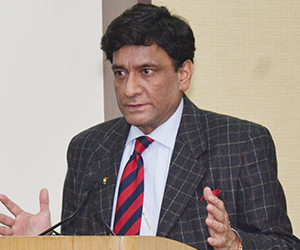

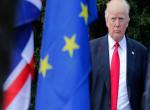
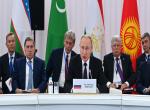
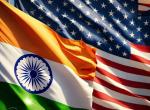
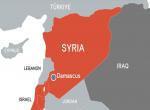
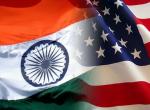

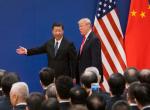
Post new comment